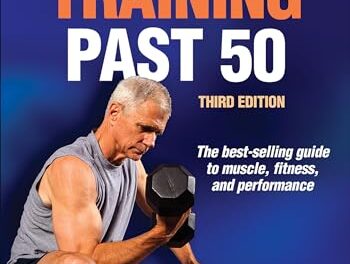The Importance of a Well-Designed Athletic Training Program
To achieve maximum performance in any sport, athletes must follow a well-designed and comprehensive training program. An effective athletic training program should focus on developing essential aspects such as strength, endurance, flexibility, and sport-specific skills. By incorporating these elements into a tailored program, athletes can improve their overall performance and reduce the risk of injury.
Key Components of an Effective Athletic Training Program
Strength Training
Strength training is crucial for building muscle, increasing power output, and improving overall athletic performance. A well-designed strength training program should include exercises that target all major muscle groups, with an emphasis on compound movements such as squats, deadlifts, and bench presses. Progressive overload, which involves gradually increasing the resistance or volume of exercises, is essential for continued strength gains.
Cardiovascular Endurance Training
Cardiovascular endurance is vital for maintaining high-intensity performance throughout a competition. Endurance training should include a mix of steady-state and high-intensity interval training (HIIT) exercises. Steady-state training, such as running or cycling at a moderate pace, helps improve aerobic capacity and overall endurance. HIIT exercises, which alternate between high-intensity bursts and periods of rest, are effective for boosting cardiovascular fitness and burning fat.
Flexibility and Mobility Training
Flexibility and mobility are essential for maintaining a full range of motion, reducing the risk of injury, and improving overall performance. A comprehensive flexibility program should include static stretching, dynamic stretching, and foam rolling. Static stretching involves holding a stretch for an extended period, while dynamic stretching incorporates movement and is best performed before training or competition. Foam rolling helps release muscle tension and improve tissue quality.
Sport-Specific Skill Development
To excel in a particular sport, athletes must dedicate time to developing sport-specific skills. This involves practicing techniques, drills, and game-like situations that mimic the demands of the sport. Sport-specific training should be progressive, focusing on mastering the fundamentals before moving on to more advanced skills.
Periodization: Structuring an Athletic Training Program
Periodization is a method of organizing an athletic training program into distinct phases, each with specific goals and training emphases. A typical periodization plan includes the following phases:
- Preparation Phase: Focus on building a foundation of general fitness, including strength, endurance, and flexibility.
- Pre-Competitive Phase: Emphasis shifts to sport-specific skill development and increasing training intensity.
- Competitive Phase: Training is tailored to maintain peak performance during competitions, with a focus on recovery and injury prevention.
- Transition Phase: A period of active rest and recovery, allowing the body to recuperate before starting a new training cycle.
By following a periodized training program, athletes can systematically progress towards their performance goals while minimizing the risk of overtraining and injury.
The Role of Recovery in Athletic Training
Recovery is a critical component of any effective athletic training program. Adequate rest and recovery allow the body to adapt to the stresses of training, repair damaged tissues, and replenish energy stores. Effective recovery strategies include:
- Getting enough sleep
- Maintaining a balanced, nutrient-rich diet
- Staying hydrated
- Incorporating active recovery sessions
- Using massage or other soft tissue therapies
By prioritizing recovery, athletes can optimize their training adaptations, reduce the risk of injury, and maintain peak performance.
In conclusion, an effective athletic training program should be well-designed, comprehensive, and tailored to the specific needs of the individual athlete and their sport. By incorporating strength training, cardiovascular endurance, flexibility, sport-specific skill development, periodization, and recovery strategies, athletes can maximize their performance potential and achieve their goals.





